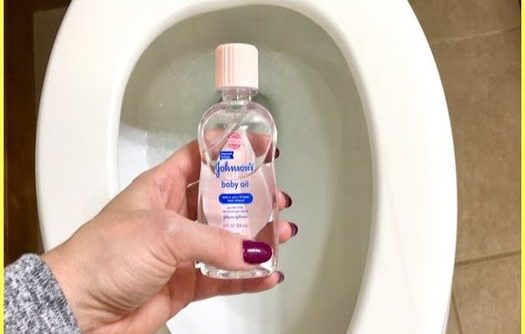ADVERTISEMENT
**Better Than Bleach: The Ultimate Solution for Removing Limescale and Grease in the Bathroom and Kitchen**
When it comes to cleaning, many of us rely on harsh chemicals like bleach to tackle tough stains and buildup in the bathroom and kitchen. However, these products can be strong, pungent, and sometimes not as effective or environmentally friendly as we would like. Thankfully, there’s a natural and effective alternative that can clean, freshen, and shine your surfaces—without the need for bleach!
In this article, we’ll introduce you to a simple and powerful homemade solution that removes limescale in the bathroom and grease in the kitchen, leaving your spaces sparkling clean and fresh.
### The Power of Natural Cleaning: Why Choose a Homemade Cleaner?
There are plenty of commercial cleaning products on the market, but many of them are packed with toxic chemicals that can be harmful to your health and the environment. In contrast, homemade cleaners can be just as effective—sometimes more so—without the added risks. Plus, they are often made from ingredients you already have at home!
Using a natural cleaner made from household ingredients like vinegar, baking soda, and essential oils is not only safer for your health, but it can also save you money. You can create a multi-purpose cleaner that works in both the bathroom and kitchen, tackling common problems like limescale, soap scum, grease, and grime.
### Why This Homemade Cleaner Is Better Than Bleach
While bleach is a powerful disinfectant, it comes with several downsides:
– **Harsh fumes:** Bleach has a strong odor that can irritate the eyes, nose, and throat.
– **Chemical residues:** Bleach can leave behind harmful residues that may pose health risks, especially for young children or pets.
– **Environmental impact:** Bleach is not biodegradable and can pollute water sources.
In comparison, a natural cleaner made from ingredients like vinegar and baking soda is not only effective but also non-toxic and eco-friendly. Vinegar, for example, contains acetic acid, which can break down mineral deposits like limescale and soap scum. Baking soda is a gentle abrasive that helps to scrub away grease and grime without damaging surfaces.
### Ingredients You’ll Need:
1. **White Vinegar** – The star of this cleaning solution, vinegar contains natural acids that dissolve limescale and soap scum. It’s also excellent for cutting through grease.
2. **Baking Soda** – A natural abrasive that helps to scrub and lift dirt, grease, and stains without scratching surfaces.
3. **Water** – Used to dilute the vinegar and create a sprayable solution.
4. **Essential Oils (optional)** – For added fragrance, you can use essential oils like lemon, tea tree, or lavender. These oils also have antibacterial properties.
5. **Spray Bottle** – To store and easily apply the cleaning solution.
### The Simple Step-by-Step Guide to Making Your Cleaner
#### Step 1: Prepare Your Cleaning Solution
1. Start with a clean spray bottle.
2. Add 1 cup of white vinegar to the bottle.
3. Fill the rest of the bottle with water (about 2 cups).
4. If you want a fresh scent and additional antibacterial properties, add 10-15 drops of your favorite essential oil.
5. Close the bottle and shake it well to mix the ingredients.
#### Step 2: Using the Cleaner for Limescale Removal (Bathroom)
Limescale is a common problem in bathrooms, especially in areas with hard water. It can build up on faucets, showerheads, and tiles, creating unsightly spots and reducing water flow. Here’s how to remove limescale:
1. **Spray the Solution:** Spray your homemade cleaner directly onto the areas with limescale, including faucets, showerheads, and tiles.
2. **Let it Sit:** Allow the solution to sit for 5-10 minutes to loosen the limescale deposits.
3. **Scrub:** Use a soft sponge or cloth to scrub away the limescale. For stubborn buildup, sprinkle a little baking soda onto the area before scrubbing to add some extra abrasion.
4. **Rinse and Wipe:** After scrubbing, rinse the area with warm water and wipe it clean with a microfiber cloth for a streak-free finish.
For Complete Cooking STEPS Please Head On Over To Next Page Or Open button (>) and don’t forget to SHARE with your Facebook friends
ADVERTISEMENT
